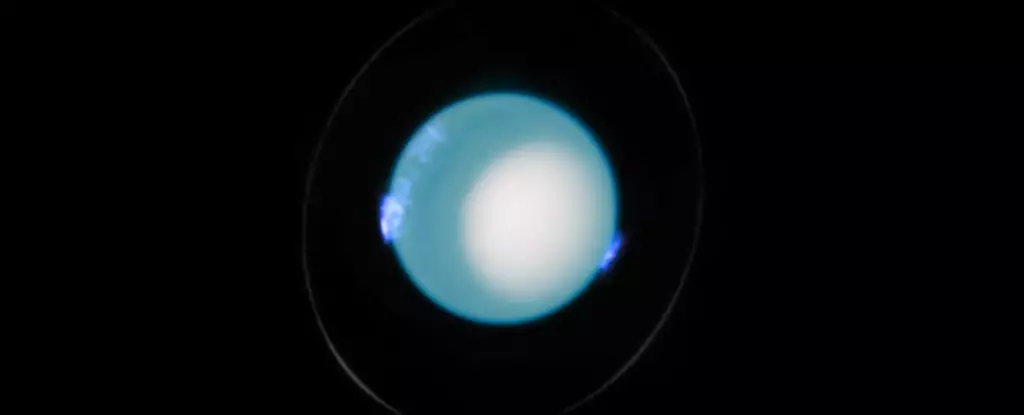In a series of groundbreaking observations, scientists have successfully challenged long-held assumptions about the rotation period of Uranus. Once believed to furnish a day in approximately 17 hours and 14 minutes, new measurements have delivered a more accurate assessment: a complete rotational period spans 17 hours, 14 minutes, and 52 seconds. This seemingly minor adjustment of 28 seconds unveils vast implications for the scientific community, as it reshapes our understanding of planetary dynamics and introduces a new era in the study of Uranus.
Astrophysicist Laurent Lamy, associated with the Paris Observatory, contends that these fresh measurements facilitate substantial advancements in planetary science. Previously, existing coordinate systems derived from outdated rotation data led to inaccuracies, complicating the longstanding endeavor to track Uranus’ magnetic poles. Such discrepancies impede researchers from understanding it more holistically, posing challenges in various scientific explorations and making it difficult to integrate new findings coherently.
The Outer Limits of Our Solar System
Uranus, alongside its distant neighbor Neptune, constitutes the farthest bracket of planets within our solar system. Positioned twice the distance of Saturn from the Sun, Uranus is obscured visually and astrobiologically, described as small and dim under earthly observation. The only spacecraft that have entered Uranus’ orbit thus far is Voyager 2, which passed by during its mission in 1986. Decades later, the ongoing gap in direct human instructions and observations means that our knowledge regarding these ice giants remains scant, necessitating precision in the way planetary data is collected and analyzed.
This lack of close-up investigation necessarily introduces an air of uncertainty, as earlier observations may be biased by the unique circumstances surrounding that flyby. A second layer of difficulty emerges from the need to discard outdated models and re-evaluate the magnetic poles and atmospheric phenomena on Uranus, both of which are profoundly influenced by its rotation rate.
The Hunt for Accurate Measurements
In their quest for precision, Lamy and team scrutinized data captured by the Hubble Space Telescope between 2011 and 2022, zeroing in on the planet’s ultraviolet auroras. These luminous phenomena, which translate atmospheric activities akin to earthly auroras, allowed the research team to ascertain specific details about the magnetic fields at play. Charged particles colliding with Uranus’ magnetosphere launch interactions that trigger illuminating displays as they plunge into the atmosphere.
Another facet worthy of note is Uranus’ unusual axial tilt. Its rotation occurs almost parallel to the ecliptic, a peculiar positioning compared to other planets in our system. This unique geometry not only adds complexity to Uranus’ magnetic field but also complicates the long-term tracking of its auroras. By closely monitoring these auroral activities, however, Lamy’s team ingeniously reestablished the location of Uranus’ magnetic poles, an achievement that ultimately led to the precise calculation of the planet’s rotation period.
A New Era of Precision Science
What makes this measurement of Uranus’ day particularly remarkable is its unprecedented accuracy—a feat that surpasses even the existing data on Jupiter’s rotation. This new methodology not only establishes a robust framework for future investigations but also lays the foundational steps for assessing other giant planets within the solar system. Lamy highlights that the new longitudinal system allows for comparative studies across nearly four decades of auroral data, affording the scientific community with rich insights into not just Uranus but the dynamism of planetary behaviors in general.
As research continues to evolve, the implications of such refined understanding stretch far beyond Uranus alone. By recalibrating the way we document planetary rotations, scientists are now better positioned to study the solar system, offer potent assessments of planetary environments, and eventually inform upcoming missions to Uranus. The excitement here is palpable, igniting the imaginations of planetary scientists eager to unravel more deceptions the universe may hold amidst the vast cosmic tapestry.


Leave a Reply